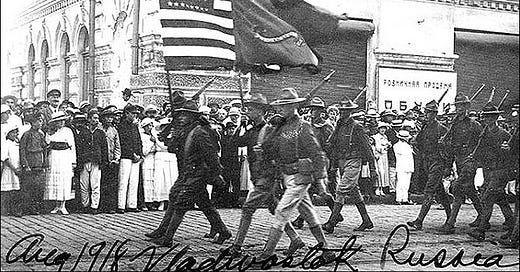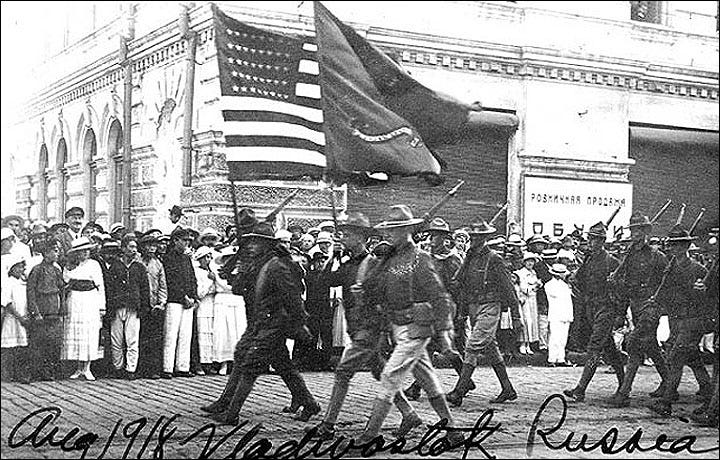That time when American and Russian forces fought each other after World War I
History Hobbservations!
While most American history instructors teach that the United States and Russia were allies in both the first and second World Wars, did you know that American and Russian forces waged war against each other in the waning days and aftermath of World War I?
If your answer is "no," do not feel bad; such is not a story that is told very often in textbooks, documentaries, or in the popular media.
Well over a century ago, Russia joined France and Great Britain in conflict against the “Central Powers” of Germany and the Austro-Hungarian Empire (among others) after the latter's Archduke Franz Ferdinand and his wife, Sophie, were assassinated in 1914. The photo below depicts the Archduke and Countess shortly before they were shot to death by Gavrillo Princip in Sarajevo, the modern day capital of Bosnia and Hercegovina.
After three years of war, the Bolsheviks (communists), under the leadership of Vladimir Lenin and Leon Trotsky, pitted its Red Army against the White Army soldiers that were loyal to Russian Czar Nicholas II for the destiny of Russia.
The Czar and his family were placed under house arrest in early 1918, and while Lenin had intended for the family to be tried in a public proceeding, they were executed by a Bolshevik firing squad in July of 1918.
As Russia was (and remains) a vast territorial nation, the Bolsheviks made peace with Germany and focused squarely upon fighting the White Army and assorted “czarists” for control of the entire nation.
How did American forces enter the Russian Civil War?
So, when Russia stopped fighting Germany, the German Army was able to ship vast divisions of troops to the Western front to fight the French, British, and Americans. Fearing that the war could be lost with so many German reinforcements, the Allies convinced then U.S. President Woodrow Wilson to send troops to Russia in hopes of forcing Germany to divide its forces once more to stave off an American march towards Berlin.
It never happened; Germany's Kaiser Wilhelm II, a cousin of the then deceased Czar Nicholas II and Britain's King George V, signed an Armistice with the Allies on November 11, 1918, thus ending World War I.
But the Russian Civil War continued to the east, and the U.S. soon found itself engaging the Bolshevik Red Army in western Russia—and came painfully close to fighting White Army units that were torturing peasants in Siberia to the east!
The 13,000 American Expeditonary Forces deployed to Russia were led by General Williams Graves, and comprised of the 27th, 31st, and 339th U.S. Army regiments. The 339th, stationed in the northern parts of Russia closer to the Arctic Circle, deployed soldiers hailing from Michigan due to beliefs that they would be better suited for the 45 degrees below zero temperatures.
From November 1918 until June of 1919, the American units, nicknamed the "Polar Bears," engaged in skirmishes against the Russian Red Army that left 235 American soldiers dead—and hundreds wounded!
Years later, Lieutenant John Cudahy of the 339th reminisced in his book, Archangel, “When the last battalion set sail from Archangel (City in Russia), not a soldier knew, no, not even vaguely, why he had fought or why he was going now, and why his comrades were left behind—so many of them beneath the wooden crosses...”
Lest we forget...










Those American soldiers were more expendable than expeditionary given the reason they went to Russia in the 1st place..